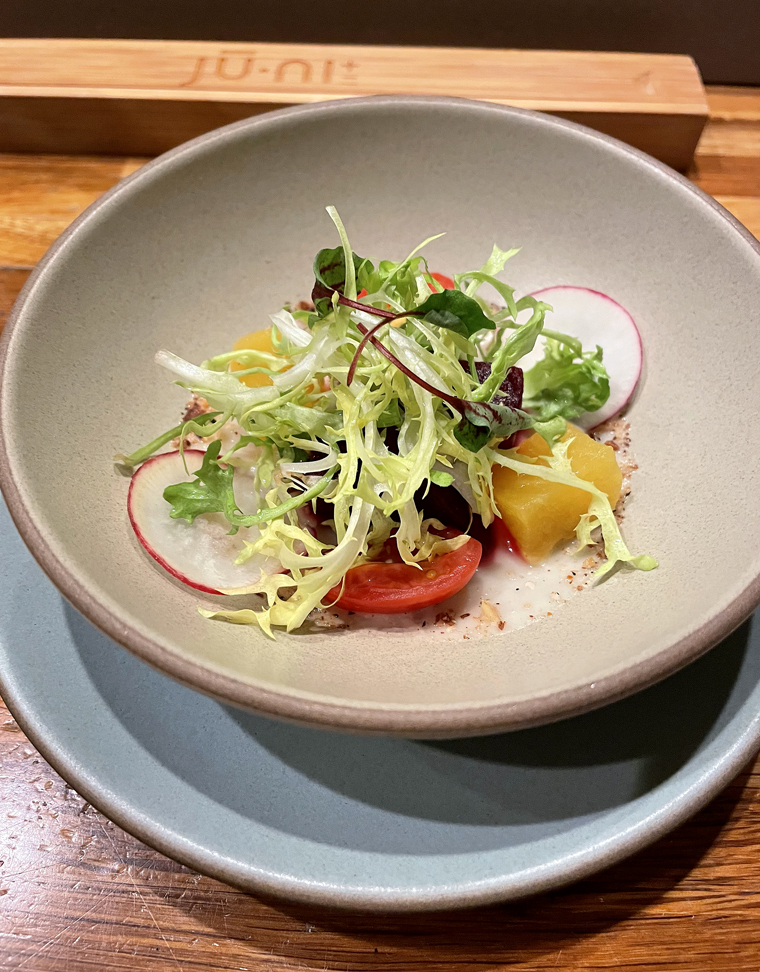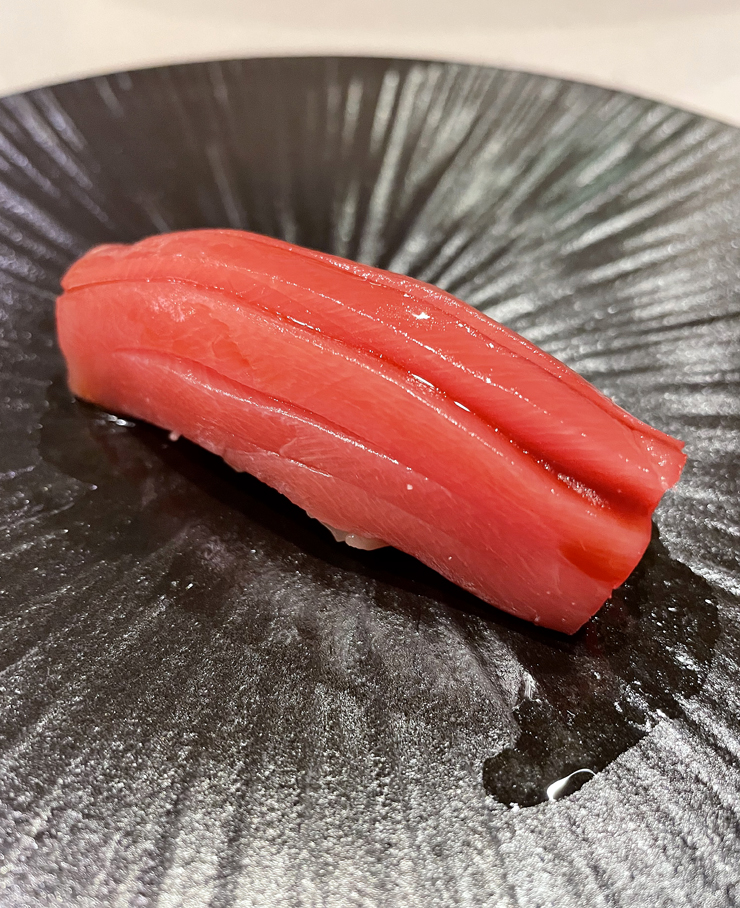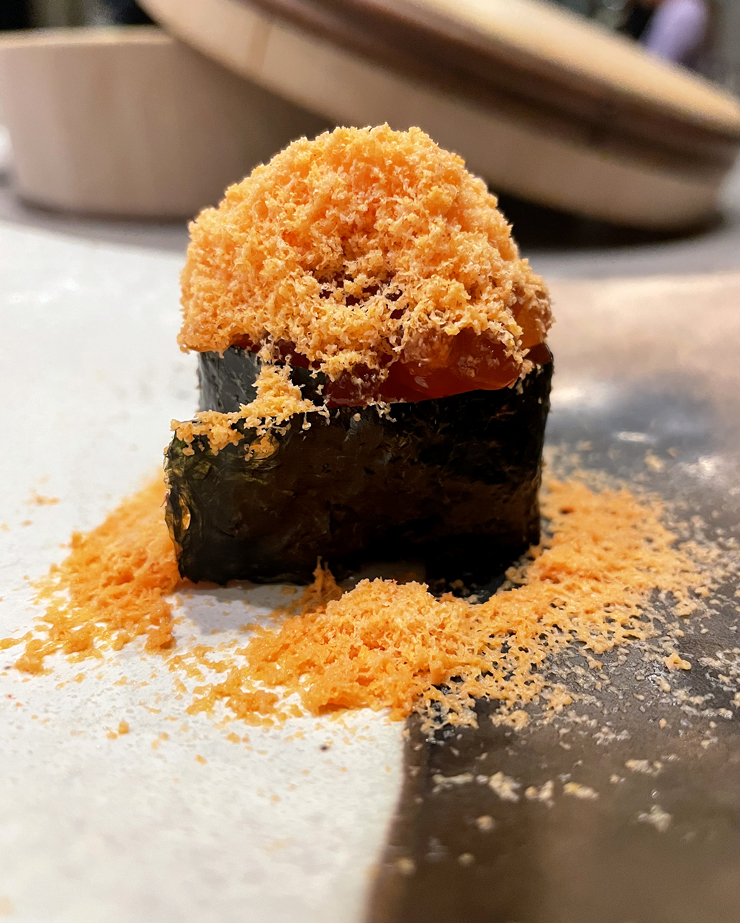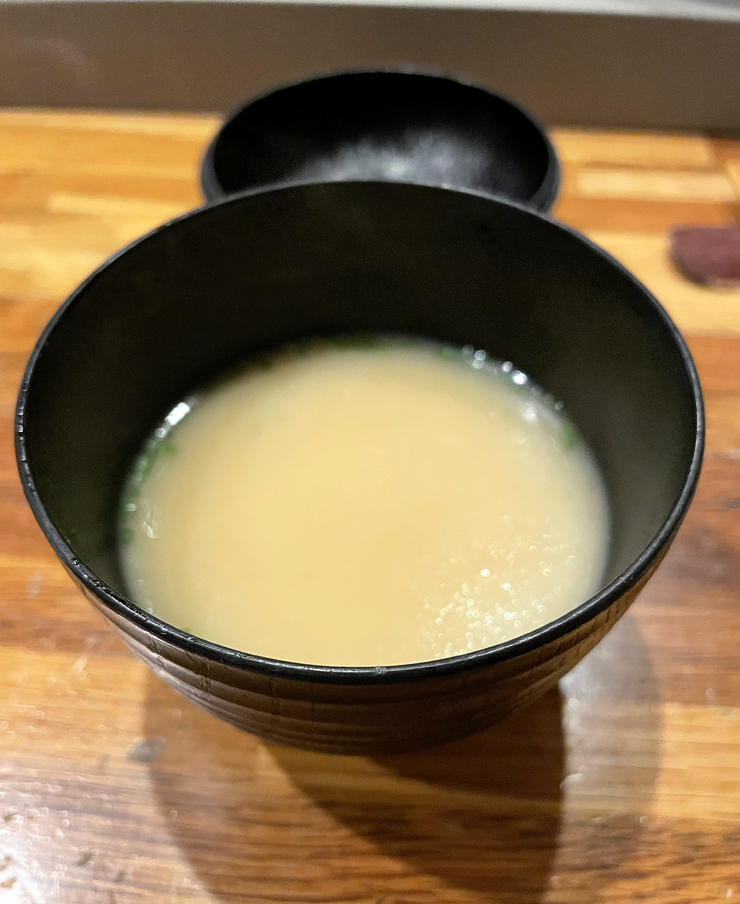The Personalized Touch at Ju-Ni

The name of San Francisco’s Ju-Ni restaurant means “12” in Japanese. But nowadays, it might as well be called Ju-Roku or “16.”
When Executive Chef Geoffrey Lee and business partner Tan Truong opened it in 2016, Ju-Ni indeed featured three sushi chefs for 12 guests (or one chef per four guests). But with its popularity, the omakase restaurant, which held a Michelin star for four years, decided to add one more sushi chef to now accommodate a total of 16 guests.
If you dine in a foursome as I did recently, it’s ideal because it means you get your own sushi chef for the entirety of the meal, whom you can converse with easily.

The 14-course omakase is $198 per person, and it must be prepaid when you make your reservation online. When you arrive at the restaurant, you can add beverages and any additional items on offer.
Because the restaurant is located in the congested NoPa neighborhood, it pays to allow plenty of time to get there if you’re driving because finding a parking space will be a headache, especially on a Saturday night.
Even if you arrive frazzled, though, the restaurant’s modern, minimalist interior of light wood will soon calm you.


The omakase kicks off with a simple beet salad with frisee in a bright yuzu dressing. That’s followed by a kisu oyster from British Columbia, propped up on smooth river stones. It’s served on the half shell with house-made oyster sauce that amplifies its umami character, yuzu tabasco for the merest hint of heat, and a dollop of caviar to add a touch of luxury. There’s a surprise addition of rice underneath that nicely soaks up all the oyster liqueur to enjoy.
A dish of pickled ginger is set before you to refresh the palate between bites, but there is no soy sauce or wasabi alongside. Instead, each nigiri is presented by the chef ready to enjoy without any further embellishments on your part.



The first fish is shima aji or Japanese striped jack that’s aged for 3 days to firm its flesh and give it an even more buttery quality.
It’s followed by one of my favorites of the night: Japanese snapper cured for 3 hours with shiso, lime, and mustard, and served with Japanese pickled plum. I’m a sucker for anything with shiso or ume, both of which added gentle yet impactful fruity and minty notes.
While my dining companions next enjoyed sweet raw Hokkaido scallop (which I’m unfortunately allergic to), I received blackthroat seaperch instead. I had no complaints, as it’s a deliciously fatty fish that received a lick of smokiness from being hit with the flame of a torch. A dab of yuzu kosho added just the right amount of saltiness, and peppery heat in contrast.
New Zealand salmon is enhanced by pickled cherry blossom leaves that add an intriguing cinnamon taste.



Next comes the ever buttery bluefin tuna, which primes the palate for even more substantial and stronger tasting fish to come, such as Japanese young amberjack done up with cherry chips and crystalized soy sauce that crunches between your teeth.
More richness arrives with soy-marinated fatty bluefin tuna that gets torched quickly to crisp its very outer edges and then finished with caviar. It truly melts in the mouth.



Japanese king mackerel with its oily, more pronounced taste gets a lift with pickled shallots and chives cut so fine that they resemble confetti.
The milder wild horse mackerel is next, finished with a perky ginger-scallion paste.

Because it remains illegal for restaurants in California to sell foie gras to diners, Ju-Ni uses monkfish liver instead. In the past, you may have seen some chefs freeze foie gras, then shave it over a dish. At Ju-Ni, monkfish liver pate is frozen at minus-85°F then grated over salmon roe nigiri in a flurry like just-fallen snow. The color is amusingly almost like that of cheddar cheese. And the taste? So incredible with the creamy, melty, cold shavings coating the tiny roe that pop lusciously in your mouth.

Lastly, there’s freshwater eel with skin papery thin and crisped up like a potato chip. It’s dabbed with sweet-savory unagi sauce and a touch of sansho pepper that lends a citrusy note along with a subtle numbing effect like a milder Sichuan peppercorn.


Our party ordered two of the add-ons: otoro Kindai tuna belly ($18), the fattiest part of the tuna that just coats your entire mouth; and Hokkaido sea urchin ($22) that was as sweet and buttery as it gets.


After that, you’re presented a hand-roll made with trimmings from all the fish you’ve enjoyed that night from the regular menu, a fun touch that brings the meal full circle.
That’s followed by traditional miso soup, and finally, matcha ice cream.
With that, your moment of zen concludes, and it’s back out into the real world, where hopefully, you remember where your car is parked.

More: A Visit to Another Tan Truong-Owned Restaurant — Ofena
